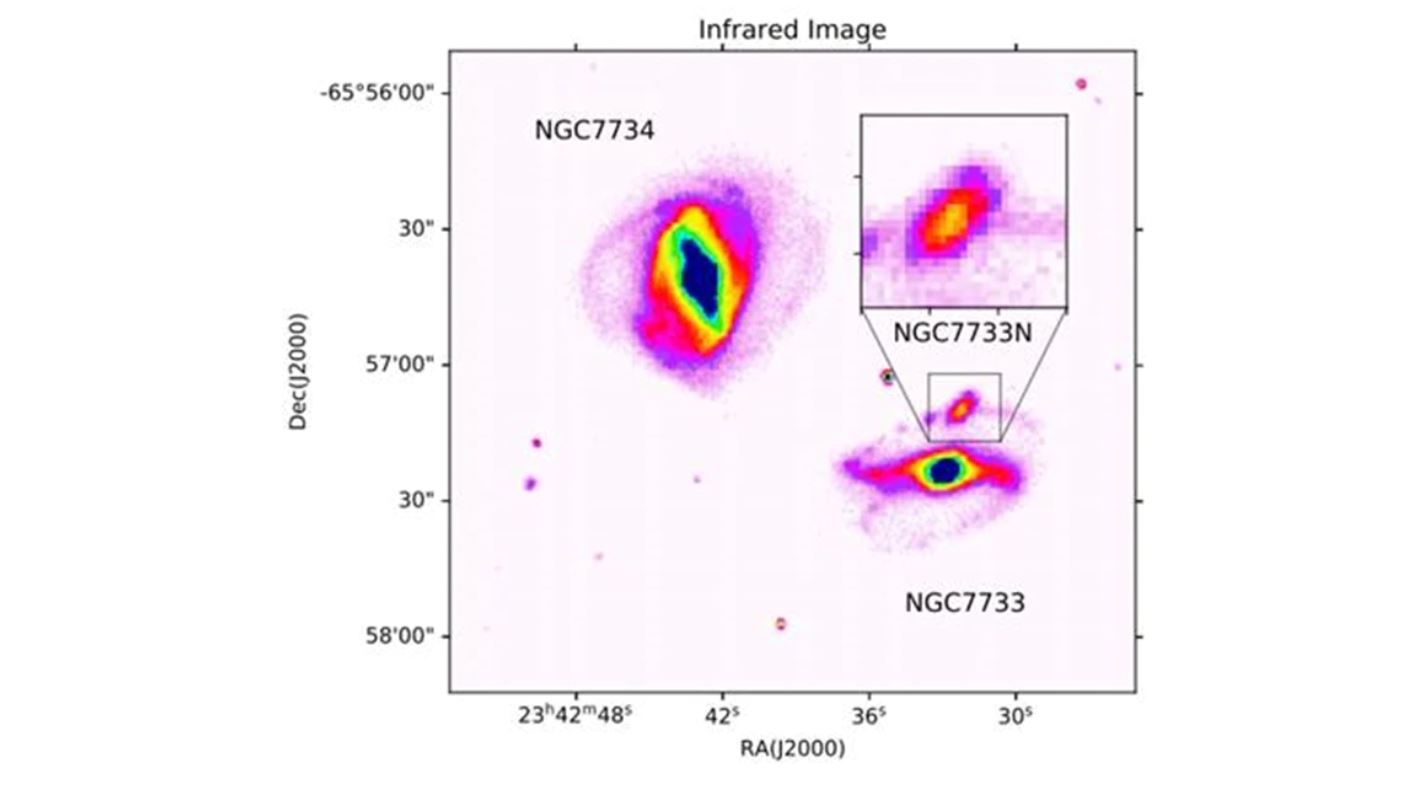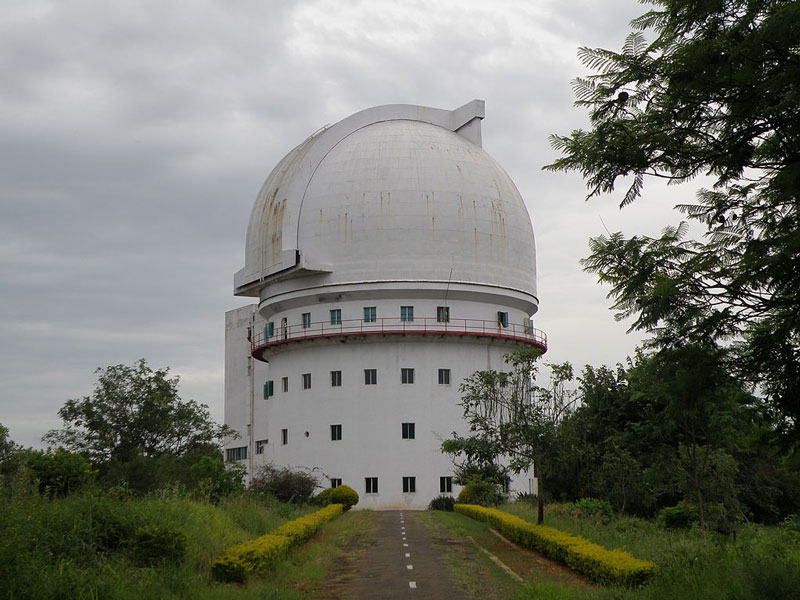- A team of Indian Scientists discovered three supermassive black holes from three galaxies.
- Ministry of Science and Technology claims- these black holes are difficult to detect due to their no light-emitting behaviour.
- These Blackholes can be detected when they interact with their surroundings.
A team of Indian Scientists from IIA [Indian Institute of Astro physics] has discovered three black holes coming from three different galaxies, which will form a triple active galactic nucleus if joined all together.
The team further detected uncommon signal emissions from the centre of the NGC7734 galaxy and a big shining clump founded along the northern side of the NGC7733 galaxy.
The region is small from the centre of the newly discovered galaxy that has more than average luminosity.
The scientist utilized the data signals from the Ultra Violet Imaging Telescope [UVIT], which was designed to respond to the cosmos’ high-quality and comprehensive field ultraviolet images.
The Indian Scientists [Mousumi Das, Sudhanshu Barway and Jyoti Yadav] from IIA detected this uncommon phenomenon. These researchers also used data from the European integral field optical telescope called MUSE in chile and infrared images from [IRSF] optical telescope in South Africa.
Difficult to detect these black holes, says Ministry of Science and Technology!
These supermassive black holes are not easy to detect due to their no light-emitting nature. However, they can show their presence by interactivity with the surroundings, claims the Ministry of Science and Technology.
The ministry further stated that when the dust particles and gas from the surroundings get inside the supermassive black hole, some of the clumps are swallowed by the black hole. In contrast, some particles are converted into energy and are emitted as electromagnetic radiation, which results in difficulty detecting the black hole as they become extraordinarily luminous.
These are called active galactic nuclei [AGN], which release a bulk amount of ionized particles and energy into the galaxy and its surroundings. These contribute to the expansion of the medium around the galaxy eventually, the evolution of the galaxy itself due to the galaxy interactions says- Ministry of Science and Technology.
Galaxy Collisions: What’s next?
The kinetic energy will be converted into surrounding gas when the black holes come closer, says the Indian Institute of Astrophysics [IIA].
The gap between the blackholes reduces with time until the detachment is around one parsec [3.26 light years].
Professional astronomers use parsecs because the parsecs is the measured unit, whereas lightyear is a derived unit. Measured units are preferred more.
Due to the final parsec complications, the width or distance between the two black holes cannot lose kinetic energy to get even more close to each other to join.
It is not the first time the active galactic nuclei pairs have been detected, and many more have been detected in the past. But the point of concern is the Triple active galactic nuclei couples are hardly rare to be found. Only a certain has been seen so far before using the X-ray observation techniques says- Researchers from the Indian Institute of Astrophysics [IIA]



